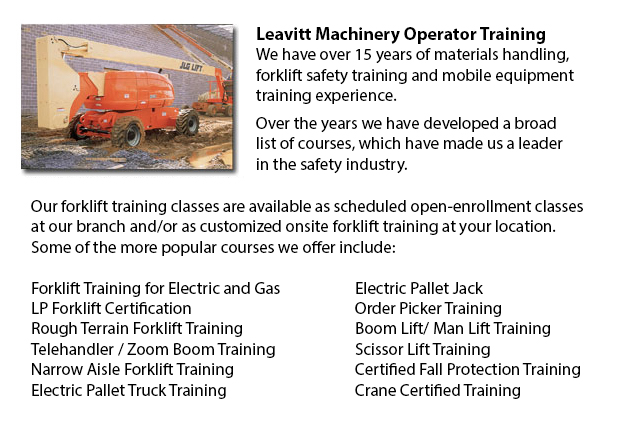
Aerial Lift Safety Training Scottsdale - There are roughly 26 to 30 construction deaths in North America due to the use of aerial lifts. Most of those killed are craftsmen such as electrical workers, laborers, painters, carpenters or ironworkers. Most fatalities are caused by electrocutions, falls and tip-overs. The greatest hazard is from boom-supported lifts, like cherry pickers and bucket trucks. Most deaths are connected to this particular type of lift, with the rest involving scissor lifts. Other risks comprise being thrown out of a bucket, being struck by falling things, and being caught between the lift bucket or guardrail and a thing, like a steel beam or joist.
The safe operation of an aerial lift requires an inspection on the following things prior to utilizing the device: emergency and operating controls, safety devices, personal fall protection gear, and tires and wheels. Check for possible leaks in the air, fuel-system, hydraulic fluid. Inspect the device for loose or missing parts.
The location where the device will be utilized must be thoroughly examined for potential hazards, such as holes, bumps, drop-offs and debris. Overhead power lines should be avoided or closely monitored. It is recommended that aerial lift devices be used on surfaces that are stable and level. Do not work on steep slopes that go beyond slope limits that the manufacturer specified. Even on a level slope, brakes, wheel chocks and outriggers must be set.
Companies should provide their aerial lift operators with the right manuals. Mechanics and operators should be trained by a licensed person experienced with the relevant type of aerial lift.
Aerial Lift Safety Tips:
o Before operating, close lift platform chains and doors.
o Do not climb on or lean over guardrails. Stand on the floor of the bucket or platform.
o Make use of the provided manufacturer's load-capacity limitations.
o Make use of work-zone warnings, like for example cones and signs, when working near traffic.
If right procedures are followed, electrocutions are avoidable. Stay at least 10 feet away from whatever power lines and licensed electricians should de-energize and/or insulate power lines. Workers must use personal protective tools and equipment, like insulated bucket. Nonetheless, a bucket which is insulated does not protect from electrocution if, for example, the worker touches a different wire providing a path to the ground.
Falls are avoidable if the worker remains secure within guardrails or within the bucket by utilizing a positioning device or a full-body harness. If there is an anchorage within the bucket, a positioning belt together with a short lanyard is adequate.
Tip-overs are preventable by following the manufacturer's directions. Unless the manufacturer specifies otherwise, never drive while the lift platform is elevated. Follow the device's vertical and horizontal reach limitations, and never go beyond the load-capacity which is specified.
-
Crane Certification Scottsdale
Crane Certification Scottsdale - The Crane Certification Program consists of the industry suggested subject matter that would teach the efficient and safe operation of cranes. The person would train in the following: pre-operational, operational and... More -
Heavy Equipment Operator Training Scottsdale
Heavy Equipment Operator Training Scottsdale - Heavy equipment operator training facilities that provide good standards within the business, offering field performance tasks and additional equipment training are really sought after training features.... More -
Heavy Equipment Training School Scottsdale
Heavy Equipment Training School Scottsdale - HEO or the heavy equipment operator courses would provide you with the skills and knowledge required so as to enter the workforce as an entry level heavy equipment operator. In this twelve week course plus... More -
Crane Operator Classes Scottsdale
Crane Operator Classes Scottsdale - For the operators and the supervisors, current and new, the crane operator training course is suitable for all. Course content deals with applicable federal, provincial and state safety regulations. The training's... More -
Forklift Operator Certification Scottsdale
Forklift Operator Certification Scottsdale - Certification for forklifts are required to guarantee the safe operation of forklifts for those employers in warehouse, construction and industrial environments. The training needs to involve a method of e... More -
Crane Training Schools Scottsdale
Crane Training Schools Scottsdale - Our different programs for Mobile Crane Operation are meant for skilled operators who needs certification or re-certification, and for inexperienced people who are searching for their very first job as an operator... More -
Aerial Boom Lift Training Scottsdale
Aerial Boom Lift Training Scottsdale - Aerial Boom Lift Training is necessary for any individual who supervises, operates or works near boom lifts. This particular type of aerial lift or aerial work platform is utilized for lifting individuals, mater... More -
Telehandler Training Scottsdale
Telehandler Training Scottsdale - Telescopic handlers often known as telehandlers for short, are an extremely popular piece of heavy construction equipment. They are widely used in the construction and agricultural industries. These equipments have f... More

Forklift Training Scottsdale
TOLL FREE: 1-888-254-6157
Scottsdale, Arizona
forkliftcertificationscottsdale.com
Email Us
About Us


